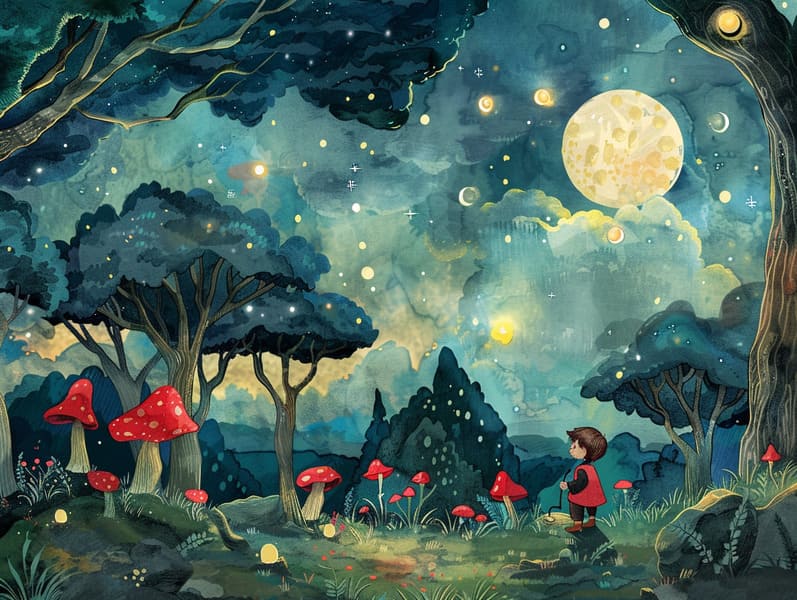The Birth of Popular Fairy Tales with Its Unfading Grandeur.
The Birth of Popular Fairy Tales with Its Unfading Grandeur.
Blog Article

Historical fairy tales have deep roots. These tales have been narrated from one generation to the next centuries before they were ever written down. They came from a variety of traditions, including Western traditions. They were initially conveyed among mature audiences, often carrying themes and messages related to the societal norms and beliefs of the time.
The Grimm brothers, the two Grimm brothers, were among the first to gather many of these beloved fairy tales. Their anthology, "Grimm's Fairy Stories," included stories like "Cinder Maid," "Little Brother and Little Sister," and "Snow White," which have since become hallmarks in the world of classic fairy tales. Similarly, Hans Andersen's charming tales, such as "The Little Mermaid," and "The Duckling that Could," have floated into hearts worldwide, securing their place in the pantheon of beloved fairy tales.
Though they are centuries old, these tales remain as impactful as ever, especially as children's bedtime stories. These magical stories are now available in many formats, including beautifully illustrated books, fantastical animations, and online fairy tales.
Their continued relevance can be traced to several whimsical characteristics:
Life Lessons: Old fairy tales often provide important moral lessons. Fairy tales like "The Wolf and the Liar" teach the significance of truth, while "The Story of the Tortoise and the Hare" emphasize the virtues of perseverance and unassuming nature. These tales offer children clear distinctions between virtue and vice, molding their moral compass in a tender yet meaningful way.
Empathy and Understanding: Ancient fairy tales frequently present protagonists facing struggles and tests, inciting readers to understand with their struggles and champion their triumphs. For instance, "Beauty's Beast" emphasizes the necessity of valuing inner qualities to know the inner spirit of a individual, enhancing tenderness and awareness.
Cultural Comprehension: Many timeless fairy tales are saturated in the cultural contexts from which they arose. Delving into these tales can provide enlightening views into different beliefs, enhancing a sense of cultural appreciation and perception.
Fantasy and Innovation: The magical elements in timeless fairy tales—spells and potions—provoke children’s inventiveness. These narratives move readers to otherworldly realms, revitalizing fantasy dreams and a sense of curiosity that persists a lifetime.
Ancient fairy tales are not only delightful but also pedagogical. They work as fascinating tools in developing various cognitive and emotional skills in young readers. When timeless fairy tales are voiced, they promote linguistic abilities by showing new language items and complicated sentence structures. This practice also cultivates listening skills and attention, as the young keep up with the story, prepared to see what happens next.
Furthermore, deliberating the themes and characters of traditional fairy tales can cultivate cognitive skills and evaluative skills. The young are educated to spot patterns, expect results, and comprehend cause and effect. These talks also support young readers reveal their thoughts and feelings, nurturing their emotional intelligence.
In today’s electronic age, the existence of digital fairy tales has made these stories more accessible than ever. Internet sites and web apps make available large libraries of ancient fairy tales that can be read or heard anytime, anywhere. Fairy tales voiced are particularly common, featuring an engaging way for young readers to savor these fantastical tales. Spoken stories and read-out-loud videos guide characters and settings to life, often augmented by magical musical scores and tunes that amplify the tale journey.
The lasting allure of classic fairy tales lies in their ability to modify to new eras while keeping hold of their essential themes. Contemporary versions of these fairy tales often spotlight more multicultural protagonists and modern settings, making them relatable to today’s audience. However, the key lessons of fearlessness, goodness, and impartiality remain unchanged, continuing to influence audiences of all ages.
Fairy tales also offer a sense of assurance and knownness. They bequeath a well-structured narrative with a straightforward beginning, middle, and end, often winding up with the resolution of conflicts and the triumph of right over wrong. This certainty can be placating for little ones, granting a sense of sturdiness in an unpredictable world.
Old fairy tales continue to entrance and instruct new generations, maintaining their allure and significance in modern society. As nighttime stories for kids, they showcase a perfect blend of find it here magic and knowledge, fostering moral values, empathy, and creativity. The prevalence of digital fairy tales and the prevalence of fairy tales recited promise that these ancient fairy tales remain accessible to new generations.
By holding onto and releasing these stories, we continue to recognize the rich tapestry of creativity and cultural heritage. Whether you are delving into a vividly illustrated book, viewing a web-based library, or hearing an spoken story, the wonder of Grimm's fairy tales is always within reach. These stories teach us of the endless presence of stories and its ability to bind us across eras and regions.
Even if you are accessing a gorgeously illustrated book, viewing a web-based library, or listening via an read-aloud story, the radiance of Grimm's fairy tales is always within reach.
These tales remind us of the endless ability of stories and its ability to bond us across epochs and places, forming a connection that charms and informs alike.